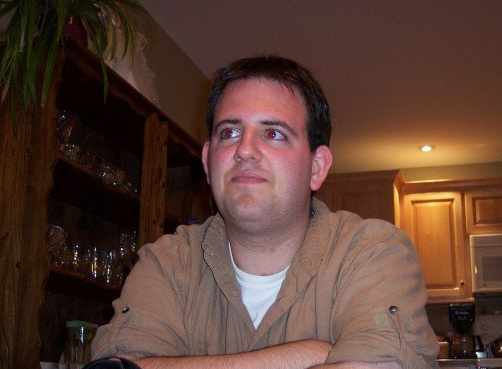Open-source Tools
NuLib
GR1D
EOS Tables
EOS Maker
EOS Driver
|
These EOS routines and tables are from O'Connor and Ott (2010), A New Spherically-Symmetric General Relativistic Hydrodynamics Code for Stellar Collapse to Neutron Stars and Black Holes, Class. Quant. Grav., 27 114103, 2010, and, of course, the original authors of the EOS. If you have any questions or have discovered a bug in our routines/tables, please e-mail Evan at
or start an issue on the GitHub page for either the EOSmaker repo or the EOSdriver repo. Please note that the routines and tables provided here come with absolutely no warranty and we are unable to guarantee that we will be able to provide support or help if you run into problems integrating them with your simulation code. If you decide to use the provided EOS routines and data in published work, it is YOUR responsibility to check their physical correctness and consistency.
|
| EOS variant | Table name and link |
| Lattimer and Swesty EOS, website^ |
| LS EOS, K = 180 MeV |
LS180_234r_136t_50y_analmu_20091212_SVNr26.h5 |
| LS EOS, K = 220 MeV |
LS220_234r_136t_50y_analmu_20091212_SVNr26.h5
LS220_240r_140t_50y_analmu_20120628_SVNr28.h5.bz2& |
| LS EOS, K = 375 MeV |
LS375_234r_136t_50y_analmu_20091212_SVNr26.h5 |
| H. Shen et al. EOS, website |
| H. Shen EOS (2011, EOS2) |
HShenEOS_rho220_temp180_ye65_version_1.1_20120817.h5 |
| H. Shen EOS with Hyperons (2011, EOS3) |
HShen_HyperonEOS_rho220_temp180_ye65_version_1.1_20131007.h5 |
| H. Shen EOS with quarks "B=(165MeV)^4" from Sagert et al. 2009 |
B165.h5 also, a NuLib table: NuLib_B165.h5. tables courtesy fo Shuai Zha |
| G. Shen et al. EOS (NL3) G. Shen et al. EOS (FSU), website |
| GShen EOS, NL3 |
GShen_NL3EOS_rho280_temp180_ye52_version_1.1_20120817.h5 |
| GShen EOS, FSU1.7 |
GShenFSU_1.7EOS_rho280_temp180_ye52_version_1.1_20120817.h5 |
| GShen EOS, FSU2.1 |
GShenFSU_2.1EOS_rho280_temp180_ye52_version_1.1_20120824.h5 |
| Hempel et al. EOS**, website |
| HS EOS, TMA |
Hempel_TMAEOS_rho234_temp180_ye60_version_1.1_20120817.h5 |
| HS EOS, TM1 |
Hempel_TM1EOS_rho234_temp180_ye60_version_1.1_20120817.h5 |
| HS EOS, FSG |
Hempel_FSGEOS_rho234_temp180_ye60_version_1.1_20120817.h5 |
| HS EOS, NL3 |
Hempel_NL3EOS_rho234_temp180_ye60_version_1.1_20120817.h5 |
| HS EOS, DD2 |
Hempel_DD2EOS_rho234_temp180_ye60_version_1.1_20120817.h5 |
| HS EOS, IUF |
Hempel_IUFEOS_rho234_temp180_ye60_version_1.1_20140129.h5 |
| Steiner et al. EOS**, website |
| SFH EOS, SFHo |
Hempel_SFHoEOS_rho222_temp180_ye60_version_1.1_20120817.h5 |
| SFH EOS, SFHx |
Hempel_SFHxEOS_rho234_temp180_ye60_version_1.1_20120817.h5 |
| Banik et al. EOS**, website |
| BHB EOS, Lambda |
BHB_lEOS_rho234_temp180_ye60_version_1.02_20140422.h5 |
| BHB EOS, Lambda Phi |
BHB_lpEOS_rho234_temp180_ye60_version_1.02_20140422.h5 |
| ^The "munu" variable in these tables has an erroneous shift of the neutron-proton rest mass difference in the LS region (rho > 1e8g/cm^3). However, the base chemical potentials are correct, to use the equilibrium electron neutrino chemical potential one should use mue - mun + mup, or mue-muhat. |
| &This table sacrifices range for resolution. It extends to log(density) = 15 instead of 16, and 50MeV instead of 250MeV in temperature. It also has slightly more points. This EOS was used for the FLASH simulations in Couch & Ott (2013) and Couch & O'Connor (2014) |
| **Please be aware that the Hempel et al.,Steiner et al., and the Banik et al. EOS have light nuclei in addition to neutron, protons, alphas and a characteristic heavy nucleus (and hyperon for the Banik et al.). These include deutrons, tritons, helions, and 4Li nuclei. They affect the compositions, and therefore neutrino interactions. All eight mass fractions are available in the H5 table, however the EOSdriver routines must be modified to access them. |
| *August 14th, 2012 (and then 17th) update fixed small issues in the electron chemical potential (and electron EOS) at the low density interface (everywhere) |
| *August 24th, 2012: The FSU2.1 was actually the FSU1.7, fixed now. |
| *October 7th, 2013: Added the H. Shen EOS with Hyperons. Note, the hyperon mass fraction can be found via 1-xn-xp-xa-xh. |
Licensing: We release the code under the creative commons attribution-noncommercial-share alike license:
 . .
This means that you may use the code and tables, but must make reference to our work, must not use them for commercial purposes, and any code including or using our routines or part of them may be made publicly available, and if so, only under the same license.
We also make available a selection of EOSs from the SRO code. This code, documentation, and other information is available here: https://bitbucket.org/andschn/sroeos/src/master/. These EOS work with the EOSdriver routines mentioned above (although please see the caveats in section 7 of the SRO User Guide), there is also a C++ version here: https://bitbucket.org/zelmani/eosdrivercxx/src/master/. These 96 EOS are used in da Silva Schneider et al. (2019) (arXiv). They are broken down into four sets as detailed in the paper (see Table 1 in the paper). In each set the two parameters are varied +/- 0,1,2 sigma away from the reference value, this gives 25 EOS for each set. The 0 sigma EOS is common among all 4 sets, giving 97 in total.
sM
sS
sK
|

 .
.
